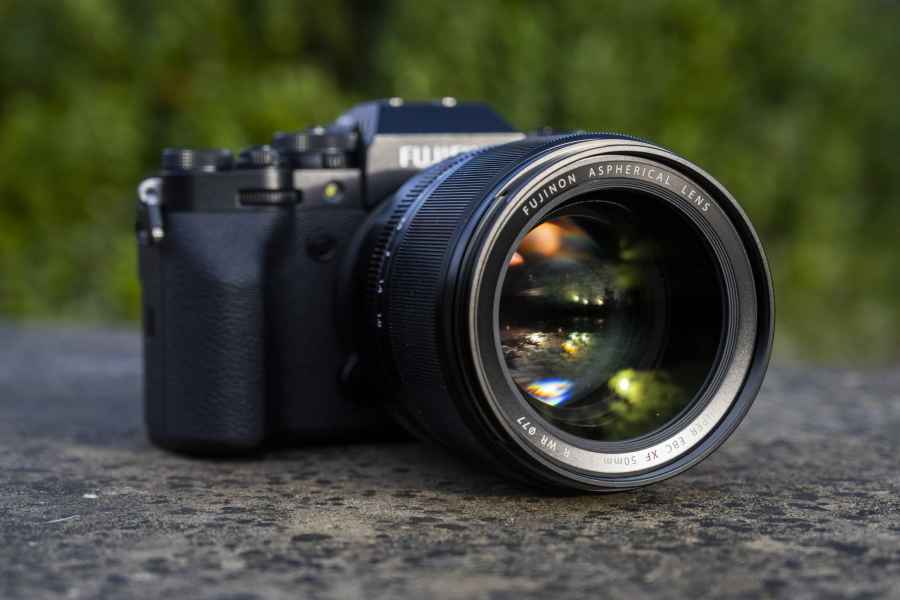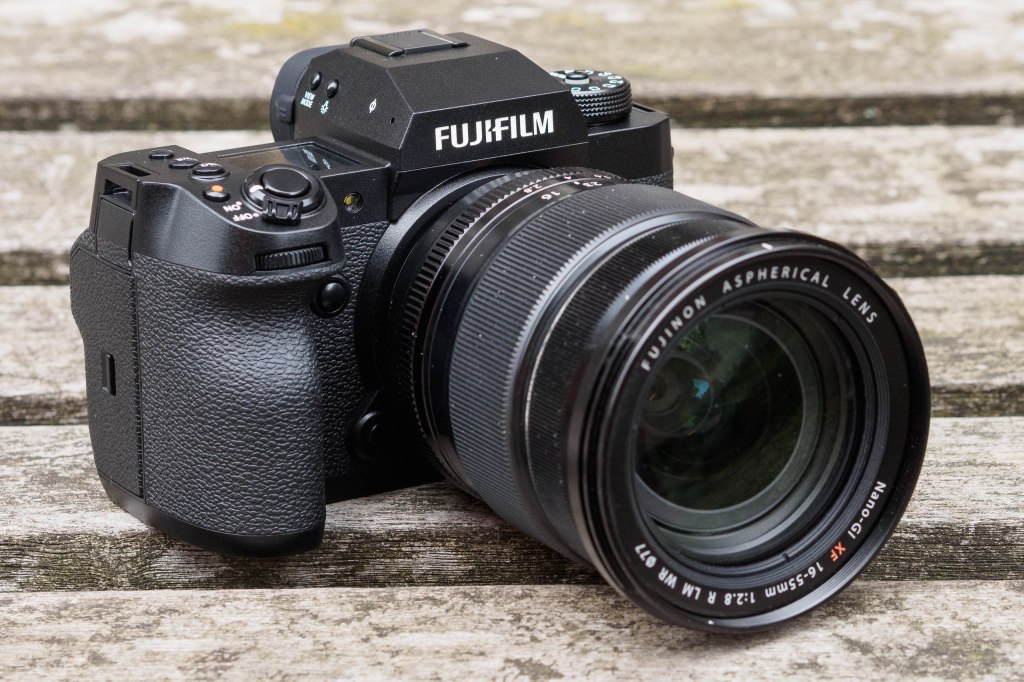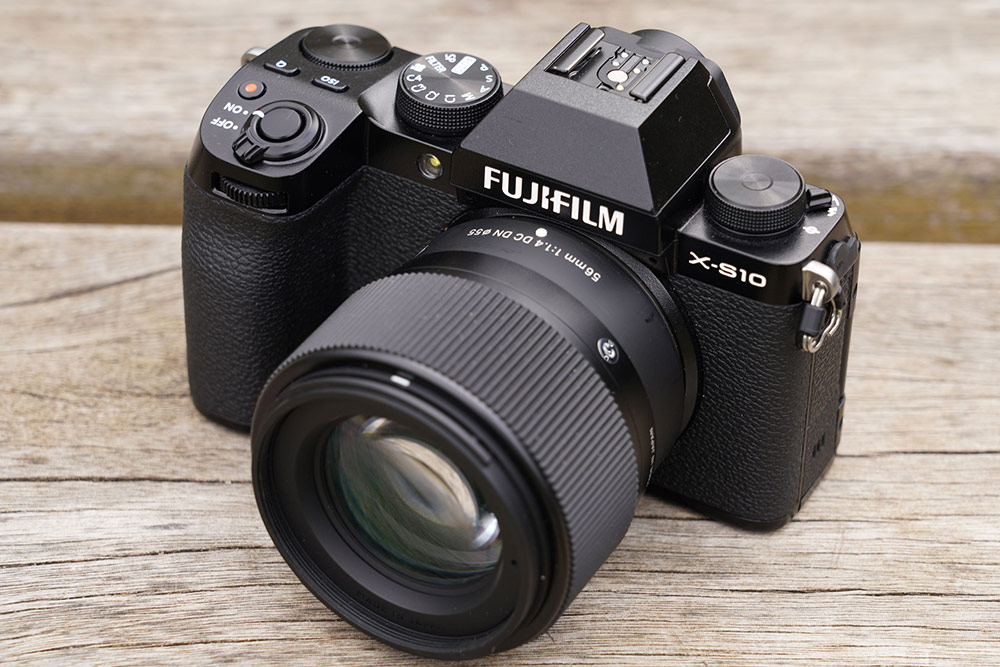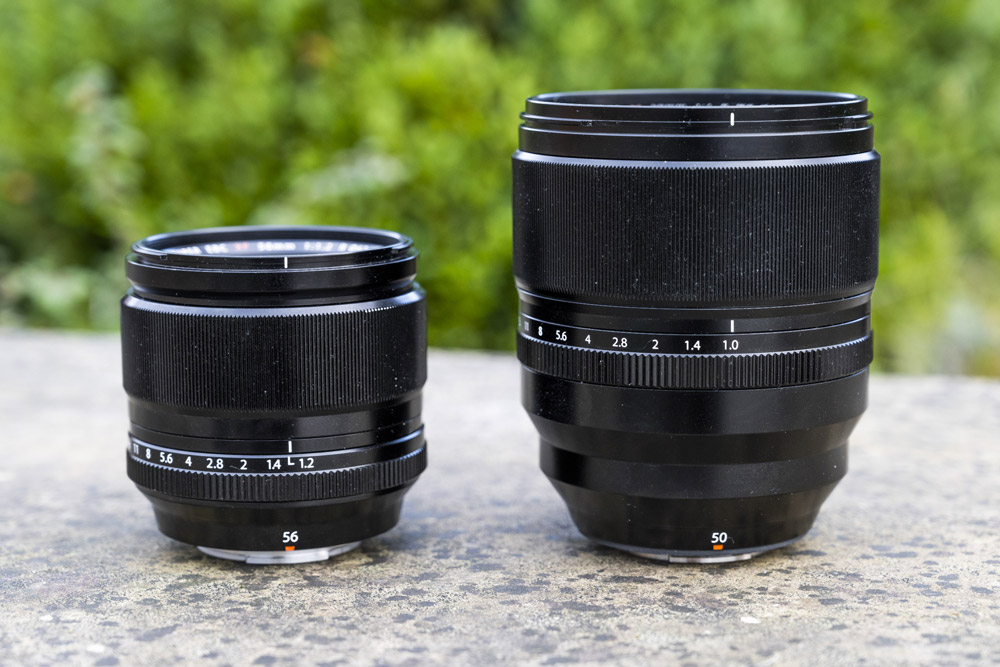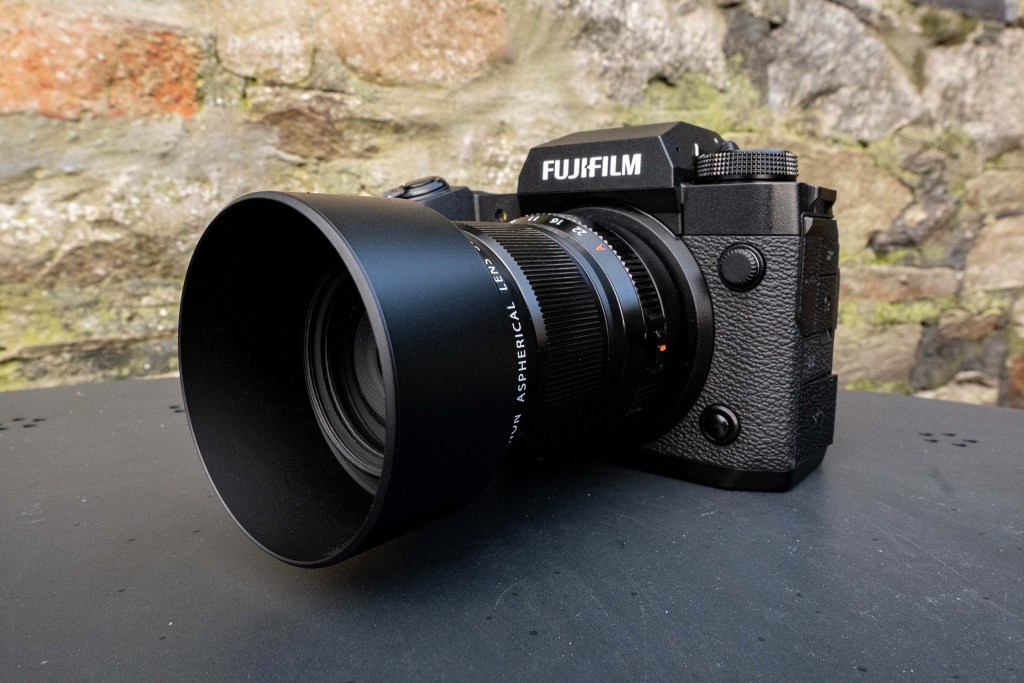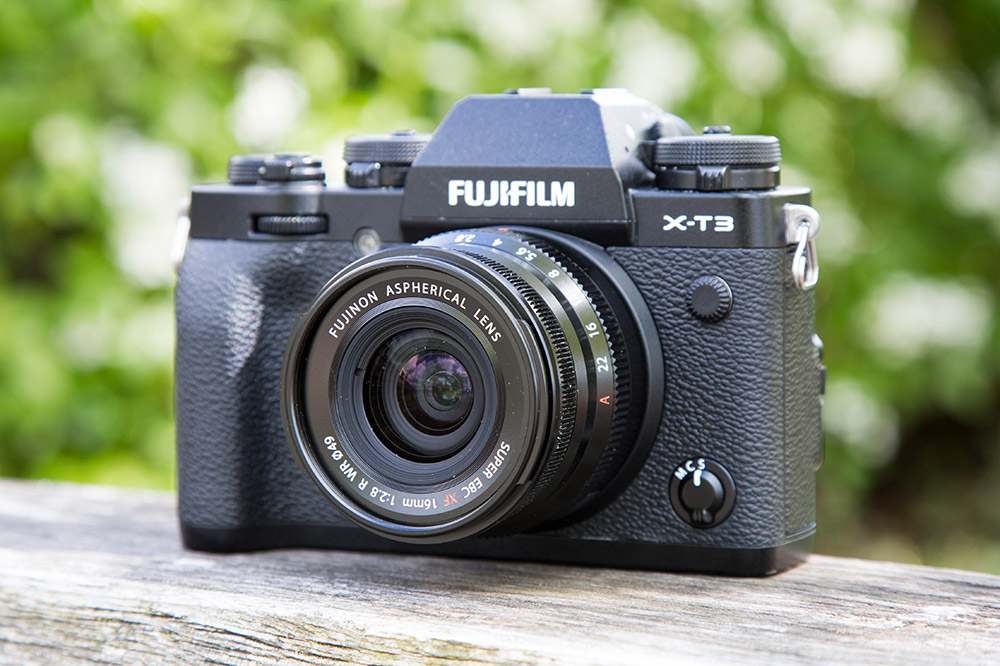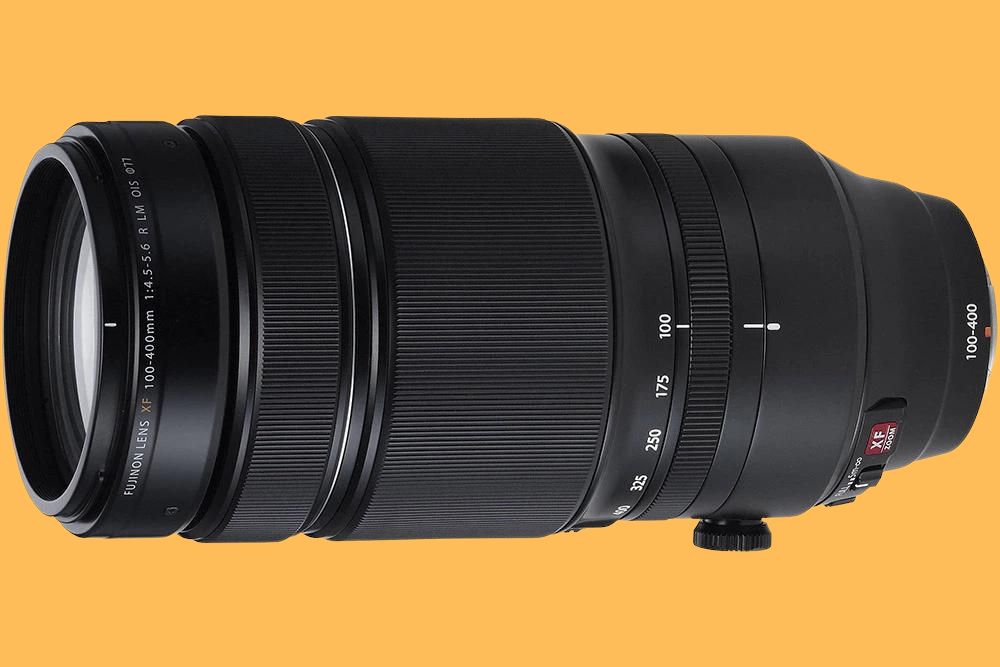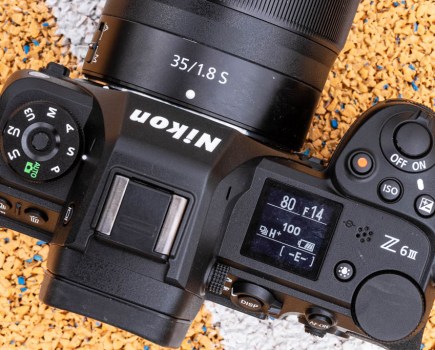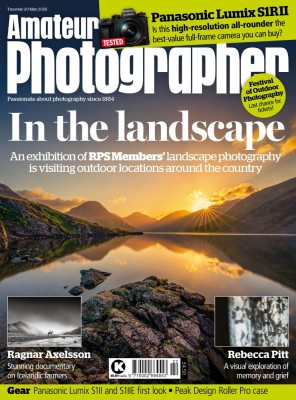The best Fujifilm X-mount lenses are known for their fast apertures, beautiful bokeh and gorgeous sharpness. With a broad selection of primes and zooms, including both Fuji-made optics and third-party options, the X-mount line-up will suit all kinds of image makers. Lightweight and well-balanced, they exemplify beautifully the virtues of an APS-C sensor and help make Fujifilm cameras among the most enjoyable to use.
We cover a wide range of lenses in this guide; all of which we have tested and reviewed individually, and judged to be worth their price tag. Finding the right X-mount lens for you is a question of what you plan to shoot.
We’ve included standard lenses, wide-angles and telephotos, as well as a mix of primes and zooms. For explanations of these terms, and the naming conventions, there is a run-through at the bottom of this page; including tips on how to choose a Fujifilm lens.
For more Fujifilm goodness, check out our list of the lenses that make the most of the high-res 40-MP sensors in the latest cameras. We also have a guide to the best Fujifilm X100V alternatives, if you’re looking for a cheaper version of the firm’s beloved compact. For now though, let’s discover which Fujifilm X-mount lenses make the cut…
The best Fujifilm X-mount lenses: our quick list
Most photographers start out with one or two lenses and gradually build up a collection that meets all their requirements. Here is a quick run-down of the lenses we’ve picked for Fujifilm X-mount cameras, along with links to get the best prices:
- Best standard zoom for X-Mount: Fujifilm XF 16-55mm f/2.8 R LM WR – Buy now
- Best longer standard zoom lens: Fujifilm XF 16-80mm f/4 R OIS WR – Buy now
- Best standard/all-purpose prime lens: Fujifilm XF 23mm f/1.4 R LM WR – Buy now
- Best third-party X-mount lens: Sigma 56mm f/1.4 DC DN Contemporary – Buy now
- Best portrait lens for X-Mount: Fujifilm XF 50mm f/1.0 WR – Buy now
- Best macro prime for X-mount: Fujifilm XF 30mm f/2.8 R LM WR Macro – Buy now
Best Fujifilm wide-angle lenses:
- Best wide-angle zoom for X-Mount: Fujifilm XF 10-24mm f/4 OIS WR – Buy now
- Best wide-angle prime lens for X-Mount: Fujifilm XF 18mm f/1.4 R LM WR – Buy now
- Best value wide-angle prime lens for X-Mount: Fujifilm XF 16mm f/2.8 R – Buy now
Best Fujifilm telephoto lenses:
- Best telephoto zoom for X-mount: Fujifilm XF 150-600mm f/5.6-8 R LM OIS WR – Buy now
- Best 100-400mm lens for X-mount: Fujifilm XF 100-400mm f/4.5-5.6 R LM OIS – Buy now
Read on to learn more about all of these fantastic lenses, including the results of full tests and reviews conducted by our team…
Why you can trust Amateur Photographer
We spend many hours testing every product we recommend, in detail, in a variety of situations and shooting scenarios, and only use experts for our reviews, so you can be sure that you’re getting the best products. Find out more about our expert writers.
<strong>Best standard zoom for X-Mount</strong>
Fujifilm XF 16-55mm f/2.8 R LM WR
Amateur Photographer verdict
A perfect walkabout lens for anything from landscapes to portraits, and covers a wide range of focal lengths- Solidly built
- Constant f/2.8 aperture
- Useful walk-about focal range
- Accepts 77mm filters
- No optical stabilisation
- Somewhat costly
At a glance:
- New price: $1,199 / £979
- Used price: $925 / from £545
- 17 elements in 10 groups
- 9 aperture blades
- 30-40cm minimum focus distance
Many beginner Fujifilm cameras come bundled with the XF 18-55mm f/2.8-4 R LM OIS. This is a great first lens, covering an effective focal length range of 27-82.5mm. When you are ready to upgrade, we’d recommend jumping to the XF 16-55mm f/2.8 R LM WR, which has a wider focal length range (effectively 24-82.5mm) and a constant maximum aperture of f/2.8. This means that the exposure doesn’t change as you zoom.
In addition, the 16-55mm lens is weatherproof, making it a better choice for photographers who don’t mind a bit of rain. It has no stabilisation functionality, which is something of a shame, but this does help keep the cost and weight of the lens down.
Read our full Fujifilm XF 16-55mm f/2.8 R LM WR review.
<strong>Best longer standard zoom lens</strong>
Fujifilm XF 16-80mm f/4 R OIS WR
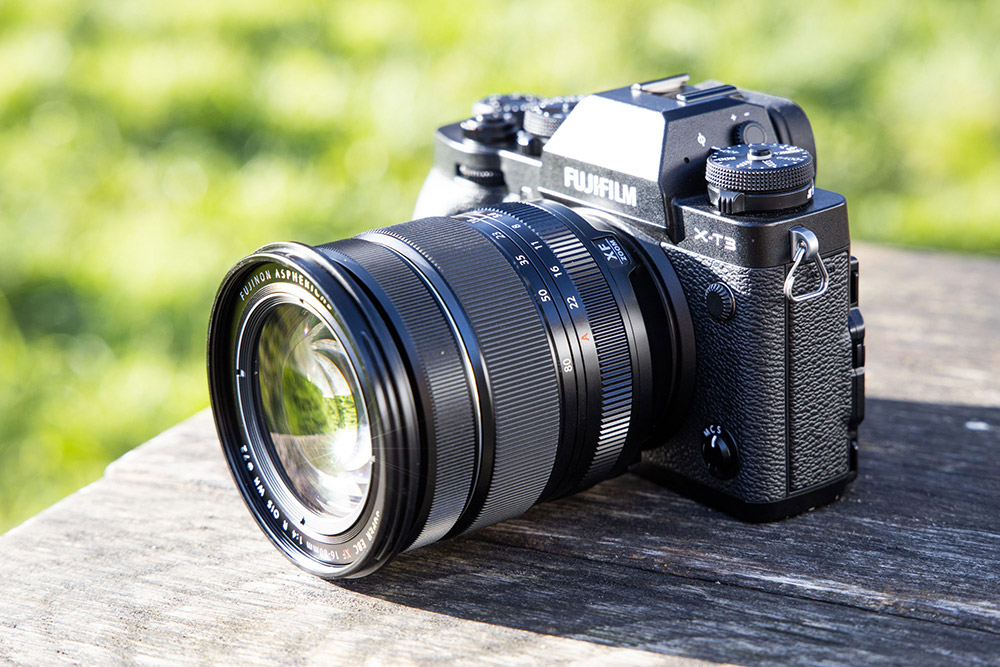
Amateur Photographer verdict
A very likeable general-purpose lens that’s ideal for travelling, and sports a practical size without being too bulky- Excellent value for money
- Broad zoom range
- Very effective stabilisation
- Some corner softness wide-open
- Not the lightest of lenses at 440g
At a glance:
- New price: $799 / £679
- Used price: $480 / from £380
- 16 elements in 12 groups
- 9 aperture blades
- 35cm minimum focus distance
The XF 16-80mm f/4 R OIS WR is another appealing alternative zoom lens as it gives greater telephoto reach, with a full-frame 24-120mm equivalent, albeit at the expense of a stop off the maximum aperture. It’s a nice halfway house between the two lenses mentioned in the previous entry – the excellent but expensive XF 16-55mm, and the cheaper but more limited XF 18-55mm.
In our review, we praised the excellent build quality and effective optical stabilisation. We noted a little softness in the corners at wide-angle and large aperture settings when reviewing our sample images, but not enough to seriously dent this well-judged, well-priced lens.
Read our XF 16-80mm f/4 R OIS WR review.
<strong>Best standard/all-purpose prime lens</strong>
Fujifilm Fujinon XF 23mm f/1.4 R LM WR
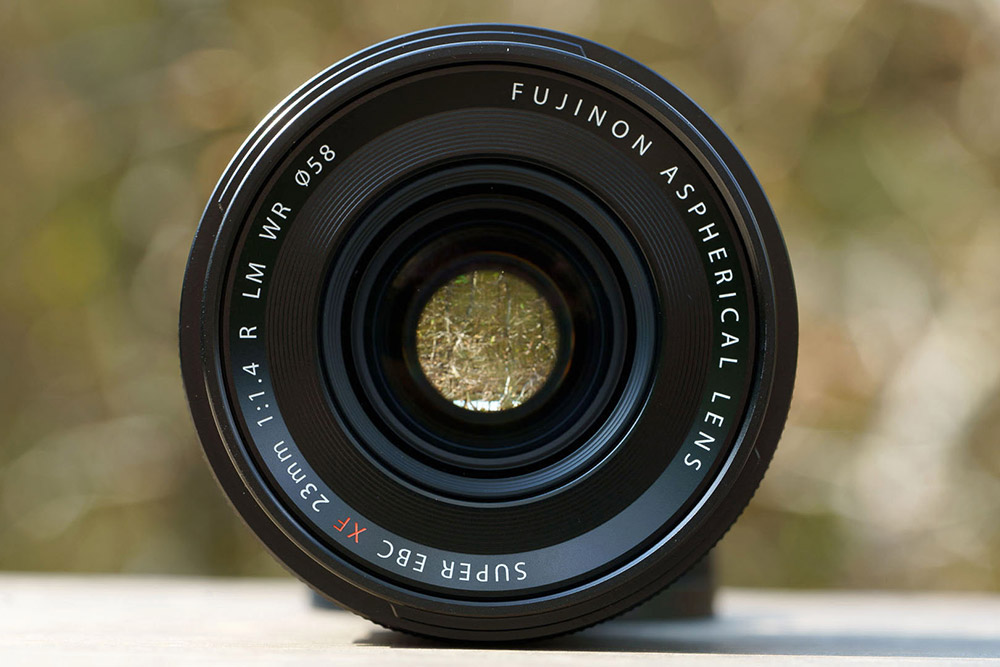
Amateur Photographer verdict
The XF 23mm F1.4 R LM WR’s close focusing capability, large aperture and excellent AF system delivers the perfect blend of traditional photography with great technology- Weather-sealed
- Superb performance
- Aperture ring with ‘A’ lock
- More expensive than its predecessor
At a glance:
- New price: $899 / £729
- Used price: around $740 / £400
- 15 elements in 10 groups
- 9 aperture blades
- 19cm minimum focus distance
The Fujifilm XF 23mm f/1.4 R LM WR may sound wide for a standard prime, but remember that 1.5x crop factor on APS-C sensors. It behaves as a 35mm lens on a Fujifilm X camera, which makes it a great all-purpose choice for street and documentary photography.
As we said in our review, the image quality is top-notch throughout the aperture range, and the close-focusing capabilities are first-rate. If you’ve already got the old XF 23mm f/1.4 R, it’s probably not quite worth the upgrade, but if you’re shopping for your first Fujifilm 35mm lens, it’s outstanding and would make a fabulous addition to your kitbag.
Read our Fujifilm XF 23mm f/1.4 R LM WR review.
<strong>Best third-party X-mount lens</strong>
Sigma 56mm f/1.4 DC DN Contemporary
Amateur Photographer verdict
An appealing compact prime lens for use with Fujifilm X, Canon EF-M, L-Mount, Micro Four Thirds and Sony E-mount, and Nikon Z. Impressive central sharpness, shallow depth of field and a fast fall-off- Affordable, high-quality lens
- Lovely bokeh
- Compatible with filters
- No electronic stabilisation
At a glance:
- New price: $519 / £419
- Used price: $370 / from £350
- 10 elements in 6 groups
- 9 aperture blades
- 50cm minimum focus distance
The Sigma 56mm f/1.4 DC DN Contemporary represents terrific value for money for Fujifilm X users looking for a dependable, high-quality portrait prime. It produces an equivalent focal length of 84mm on X-Trans sensors, and with its maximum aperture of f/1.4, is an excellent choice for photographing people. We found in our testing that this lens delivers sharp, punchy images with beautiful bokeh thanks to the nine-bladed aperture.
The price of the lens is very attractive, having come down since launch, and having both a 50cm minimum focus distance and filter compatibility gives the Sigma 56mm f/1.4 DC DN Contemporary real versatility. It’s a great choice to add to your line-up if you don’t have the budget for Fujifilm’s more expensive and luxurious portrait primes – which you’ll meet next on our list.
Read our full Sigma 56mm f/1.4 DC DN Contemporary review.
<strong><strong>Best portrait lens for X-Mount</strong></strong>
Fujifilm XF 50mm f/1.0 WR
Amateur Photographer verdict
Good value for a f/1.0 lens, gives X-series users a premium option above the XF 50mm F2 R WR and XF 56mm F1.2 R.- Highly attractive images with gorgeous bokeh
- Impressive sharpness at its sweet spot of f/4-f/5.6
- Weather resistant
- Double the weight of the XF 56mm F1.2 R
- Size not conducive to smaller X-series cameras
At a glance:
- New price: $1,499 / £1,349
- Used price: around $1,100 / £700
- 12 elements in 9 groups
- 9 aperture blades
- 70cm minimum focus distance
Fujifilm offers several lenses to suit portrait photographers. The cream of the crop is the Fujinon XF 50mm f/1.0 WR, a fabulous lens with an equivalent focal length of 75mm and the ability to deliver wonderfully blurred backgrounds so your subject stands out. However, it retails for almost $1,499 / £1,449, and it’s a big boy too – look at it standing next to a 56mm f/1.2 up there.
For these reasons many photographers are likely to prefer the smaller and more affordable XF 56mm f/1.2 R ($999 / £939) or XF 56mm f/1.2 R APD ($999 / £729). Nevertheless, if you can afford the asking price the Fujifilm XF 50mm f/1.0 WR delivers silky bokeh like no other lens.
Read our Fujinon XF 50mm f/1.0 WR review.
<strong><strong>Best macro prime for X-mount</strong></strong>
Fujifilm Fujinon XF 30mm f/2.8 R LM WR Macro
Amateur Photographer verdict
An equivalent focal length close to the “classic” 50mm makes for a walk around lens – but also for portraits, pets, flowers. Good for details in landscape and architecture, too.- Super close focusing
- Versatile
- 1:1 life-size magnification
- Quite short for a macro
At a glance:
- New price: $599 / £599
- Used price: around $490 / £500
- 11 elements in 9 groups
- 9 aperture blades
- 10cm minimum focus distance
There are a few macro lenses in the Fujifilm stable, but we particularly like this recent effort, the Fujifilm XF 30mm f/2.8 R LM WR Macro. While specialist macro photographers may want a specialist macro lens, others should seek one that’s also versatile enough to be a decent walk-around lens. The Fujinon XF 30mm f/2.8 is such a thing. Its full-frame equivalent focal length is about 46mm, and it also delivers the 1:1 magnification ratio required to be considered a ‘true’ macro lens.
The focal length is on the short side, meaning you need to get pretty close to your subject. This makes it excellent for still-life and flat lays; less so for capturing insects and other small wildlife. If the latter is your passion, you might be better off with the Fujifilm XF 60mm f/2.4 R Macro at $649 / £569 or the Fujifilm XF 80mm f/2.8 LM OIS WR Macro at $1,199 / £1,099.
Read our full Fujifilm XF 30mm f/2.8 R LM WR Macro review.
Best Fujifilm wide-angle lenses:
If you want to capture wide vistas, or stunning landscapes and architecture, or need to shoot in cramped interiors, then a wide-angle lens will help greatly. Here we highlight some of the best options you can find for the Fujifilm X-mount system.
<strong><strong><strong>Best wide-angle zoom for X-Mount</strong></strong></strong>
Fujifilm Fujinon XF 10-24mm f/4 OIS WR
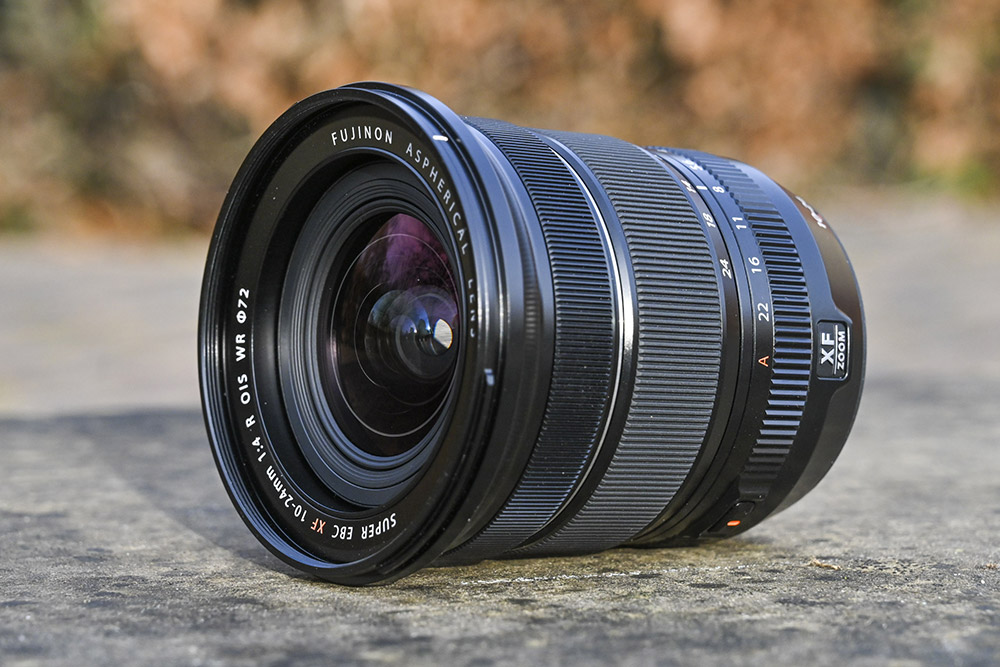
Amateur Photographer verdict
Optical stabilisation enables sharp handheld shots with slower shutter speeds. Paired with an X-series body with 5-axis image stabilisation we were able to capture sharp handheld shots.- Improved optical image stabilisation
- Lighter than many full-frame wide-angle zoom lenses
- Weather resistant
- Low frequency clicking of the diaphragm blades
At a glance:
- New price: $999 / £879
- Used price: around $749 / £700
- 14 elements in 10 groups
- 7 aperture blades
- 24cm minimum focus distance
Covering an effective focal length of 15-36mm, the XF 10-24mm f/4 OIS WR is a great choice for landscape photography, plus it has a constant aperture of f/4 and is weather-resistant. And we should stress that weather resistance doesn’t just mean it can handle a light rain – the Fujinon XF 10-24mm can be used in temperatures as low as -10°C. Weighing just 385g, it feels well-balanced on most Fujifilm X cameras.
When we reviewed the lens, we were especially impressed with its improved stabilisation, which is reliable and effective at dealing with blur caused by camera shake.
Read our full Fujifilm XF 10-24mm f/4 OIS WR review.
<strong><strong><strong>Best wide-angle prime lens for X-Moun</strong></strong></strong>t
Fujifilm Fujinon XF 18mm f/1.4 R LM WR
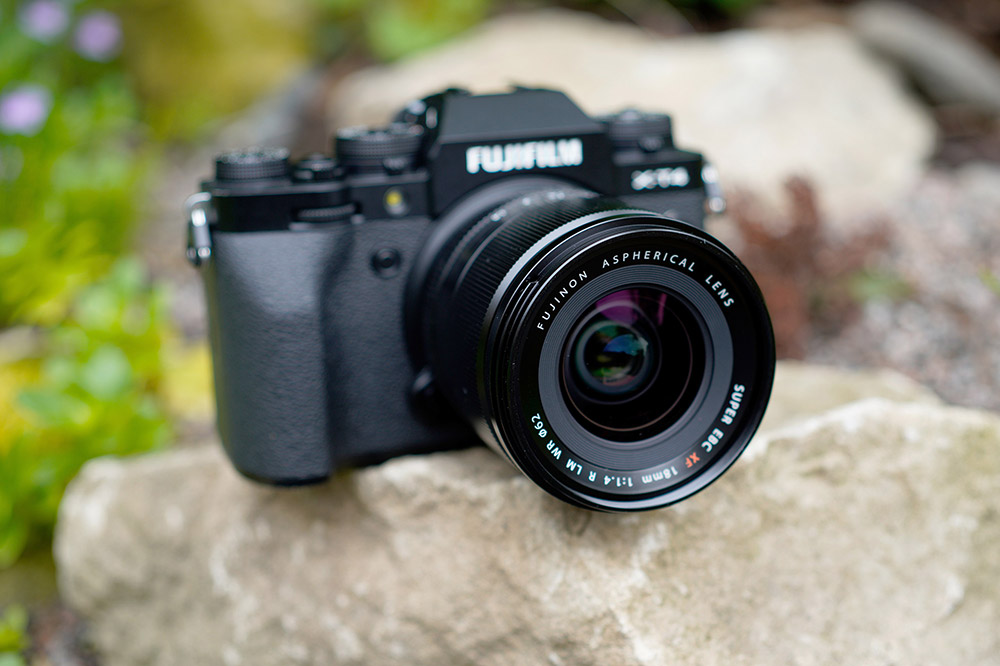
Amateur Photographer verdict
We highly recommend this lens to anyone: especially photographers and videographers who demand a 27mm equivalent focal length.- Impressively sharp
- Circular bokeh
- Fast, snappy focus
- Great build quality
- Inevitably quite expensive
At a glance:
- New price: $999 / £849
- 15 elements in 9 groups
- 9 aperture blades
- 20cm minimum focus distance
A seriously good lens that costs a serious chunk of change, the Fujifilm XF 18mm f/1.4 R LM WR is a premium wide-angle prime that perfectly complements high-end Fujifilm X cameras. In our review, we were seriously impressed with this lens. Every one of its aperture settings delivers superior sharpness and imaging performance, and the circular bokeh you can create is divine.
We said, quite simply, ‘In terms of the optics and autofocus… there is absolutely nothing to complain about with the 18mm f/1.4.
Read our full Fujifilm XF 18mm f/1.4 R LM WR review.
Best value wide-angle prime lens for X-Mount: Fujifilm Fujinon XF 16mm f/2.8 R
Amateur Photographer verdict
The metal exterior and excellent build quality match Fujifilm’s other small f/2 primes. Good image quality for the price; especially if you like the field of view of a fixed 24mm lens.- Lightweight and portable
- Terrific value
- Corner sharpness lags some way behind that of centre sharpness
At a glance:
- New price: $399 / £319
- Used price: around $314 / £289
- 10 elements in 8 groups
- 9 aperture blades
- 17cm minimum focus distance
Another wide-angle option, and something a bit more affordable is the XF 16mm f/2.8 R WR. It has an effective focal length of 24mm, weighs 155g and retails for around $399 / £339-349. In our review, we praised this lens as providing excellent value for money, with solid performance and excellent build quality.
In our review we concluded by saying ‘if you add this lens and the excellent XF 50mm f/2 R WR which ells at $449 / £409-429 to your shopping basket you’ll find you spend less than if you were to buy the XF16mm f/1.4 R WR on its own.’
Read our Fujinon XF 16mm f/2.8 R WR review.
Best Fujifilm telephoto lenses:
For getting up close and personal with distant subjects like wildlife, nothing beats a good telephoto lens. Fujifilm X-mount has some X-cellent (sorry) examples of the genre – and remember that the APS-C crop factor of Fujifilm X cameras means you can multiply the focal length on the box by 1.5x. This means you get even more reach for your money.
Best telephoto zoom for X-mount
Fujifilm Fujinon XF 150-600mm f/5.6-8 R LM OIS WR
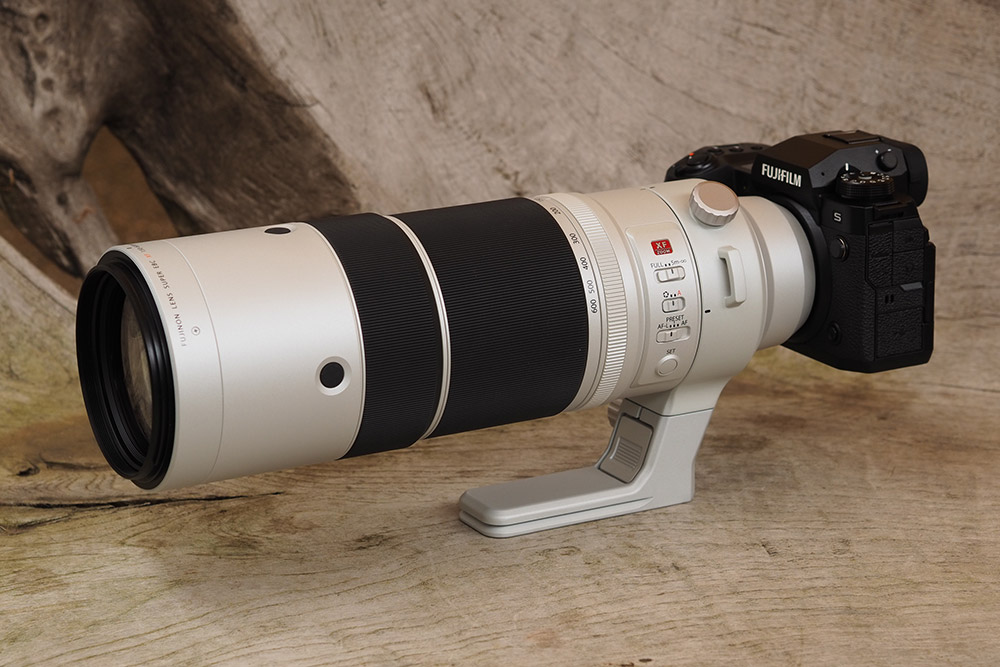
Amateur Photographer verdict
Excellent stabilisation system, can focus fast enough to enable capture of birds in flight – a very attractive lens for wildlife photographers. Small maximum aperture its main disadvantage.- Useful focal length range
- Internal focusing and zoom
- Weatherproof
- Maximum aperture f/8 at 600mm
- Big and heavy
At a glance:
- New price: $1,999 / £1,549
- Used price: $1,679 / £1,429
- 24 elements in 17 groups
- 9 aperture blades
- 240cm minimum focus distance
A relatively recent lens for X-mount, the XF 150-600mm f/5.6-8 R LM OIS WR passed through our testing bench at the end of August 2022. Spoiler for our review: we loved it. This lens demonstrates just how well Fujifilm understands the needs and wants of APS-C users. Delivering an full-frame equivalent focal range of 225-900mm, it’s great for bringing distant subjects into sharp focus. Optical quality is excellent, and the price ain’t bad either.
Anything to criticise? Well, the maximum aperture drops sharply to a rather restrictive f/8 at the tele end of the focal range, and (somewhat inevitably) it’s quite a heavy lens. That’s pretty much it!
Read our full Fujifilm XF 150-600mm f/5.6-8 R LM OIS WR review.
Best 100-400mm lens for X-mount: Fujifilm XF 100-400mm f/4.5-5.6 R LM OIS
Amateur Photographer verdict
The excellent response and accuracy of its autofocus system makes it idel for sports annd wildlife photography- Impressively sharp
- 5-stops image stabilisation
- Light build
- Plastic body
- Even the switches are plastic
At a glance:
- New price: $1,899 / £1,399
- Used price: $1,400 / around £800
- 21 elements in 14 groups
- 9 aperture blades
- 175cm minimum focusing distance
The Fujifilm XF 100-400mm f/4.5-5.6 R LM OIS is another lens that plays cleverly into the virtues of APS-C systems. For one, it uses a plastic build rather than metal, which some users may consider to be sacrilege, but it makes the lens much lighter. This means you’re much more agile than you would be lugging about a full-frame system with a metal lens. Granted it doesn’t feel as robust, but the weatherproofing is still present and correct (just don’t drop it).
Image quality is also excellent, as we discovered when we tested the lens under the demanding conditions of a motorsport event in extremely wet weather.
Read our Fujifilm XF 100-400mm f/4.5-5.6 R LM OIS review
How to choose a Fujifilm X-Mount lens: lens terminology
XF and XC
The majority of Fujifilm’s X-mount lenses are badged ‘XF’, but there are three ‘XC’ lenses, the XC 35mm f/2, XC 15-45mm f/3.5-5.6 OIS PZ and the XC 50-230mm f/4.5-6.7 OIS II.
The XC lenses are more affordable than comparable XF optics and have a plastic barrel and mount, but if you pick one up, you’ll realise that they still have high-quality optics inside.
Fujifilm’s XF lenses have an aluminium barrel, external elements and mount, while their rings are machined from a solid block of metal, all of which makes them durable.
What do the letters mean on Fujifilm lenses?
Like most lens manufacturers, Fujifilm use letters to denote the technology or special features within an optic. Understanding what they mean is key to ensuring you make the right lens selection, so here’s a short guide:
- APD: This is only used on the XF 56mm f/1.2 R APD and indicates that the lens has an apodization filter within its barrel. This filter softens the edges of out of focus areas to give more attractive bokeh.
- LM: Lenses with LM in their name use a linear motor for autofocusing, which is fast and quiet.
- OIS: This stands for Optical Image Stabilisation. Fujifilm OIS lenses have optical elements that move to compensate for accidental camera movement.
- PZ: Found on two lenses, the XC 15-45mm f/3.5-5.6 OIS PZ and the XF 18-120mm f/4 LM PZ WR, ‘PZ’ denotes than the lens has a power zoom. This means that rather than extending or retracting the lens manually by rotating a zoom ring, there’s a motor that drives it.
- R: Most, but not all of Fujifilm’s X-mount lenses have an R to indicate the presence of an aperture ring.
- WR: This indicates that the lens has seals to make it weather resistant.
How we test lenses
We review lenses from the perspective of choosing one for its photography and video performance, so we test each lens for all aspects of image quality: sharpness, contrast, background blur and bokeh, as well as other image qualities pertinent to assessing a lens type. We look for optical flaws such as chromatic aberration and distortion. We test focus performance for both accuracy and speed (in different lighting conditions), as well as how the lens delivers or renders images. This is tested in a range of shooting scenarios designed to expose lens characteristics, but we also examine how it performs in real world use in diverse shooting situations.
Beyond the pure optical performance of the lens, we assess the lens’ physical qualities, such as its design, build quality, ease of handling, and whether it offers any unique or interesting features worth mention. Beyond image quality certain lenses can be assessed for how they make you feel, or how they may affect a camera system set-up for portability, compactness, weight etc.
Text by Angela Nicholson, with contributions from Jon Stapley and Michael Topham
Read more of our Fujifilm Fujinon Lens Reviews:
- Fujifilm Fujinon XF 16mm f/2.8 R WR Review
- Fujifilm Fujinon XF 18mm f/1.4 R LM WR Review
- Fujifilm Fujinon XF 18-120mm F.4 LM PZ WR Review
- Fujifilm Fujinon XF 18-135mm f/3.5-5.6 R LM OIS WR Review
- Fujifilm Fujinon XF 23mm f/2.8 R WR Review
- Fujifilm Fujinon XC 35mm f/2 Review
- Fujifilm Fujinon XF 35mm f/2 R WR Review
- Fujifilm Fujinon XF 50mm f/2.0 R WR Review
- Fujifilm Fujinon XF 56mm f/1.2 R Review
- Fujifilm Fujinon XF 90mm f/2 R LM WR Review
- Fujifilm Fujinon XF 100-400mm f/4.5-5.6 R LM OIS Review
If you’re looking for more guides, have a look at our buying guides, and our latest lens reviews.
Further reading – Nobody does it better:
Best image stabilisation system

